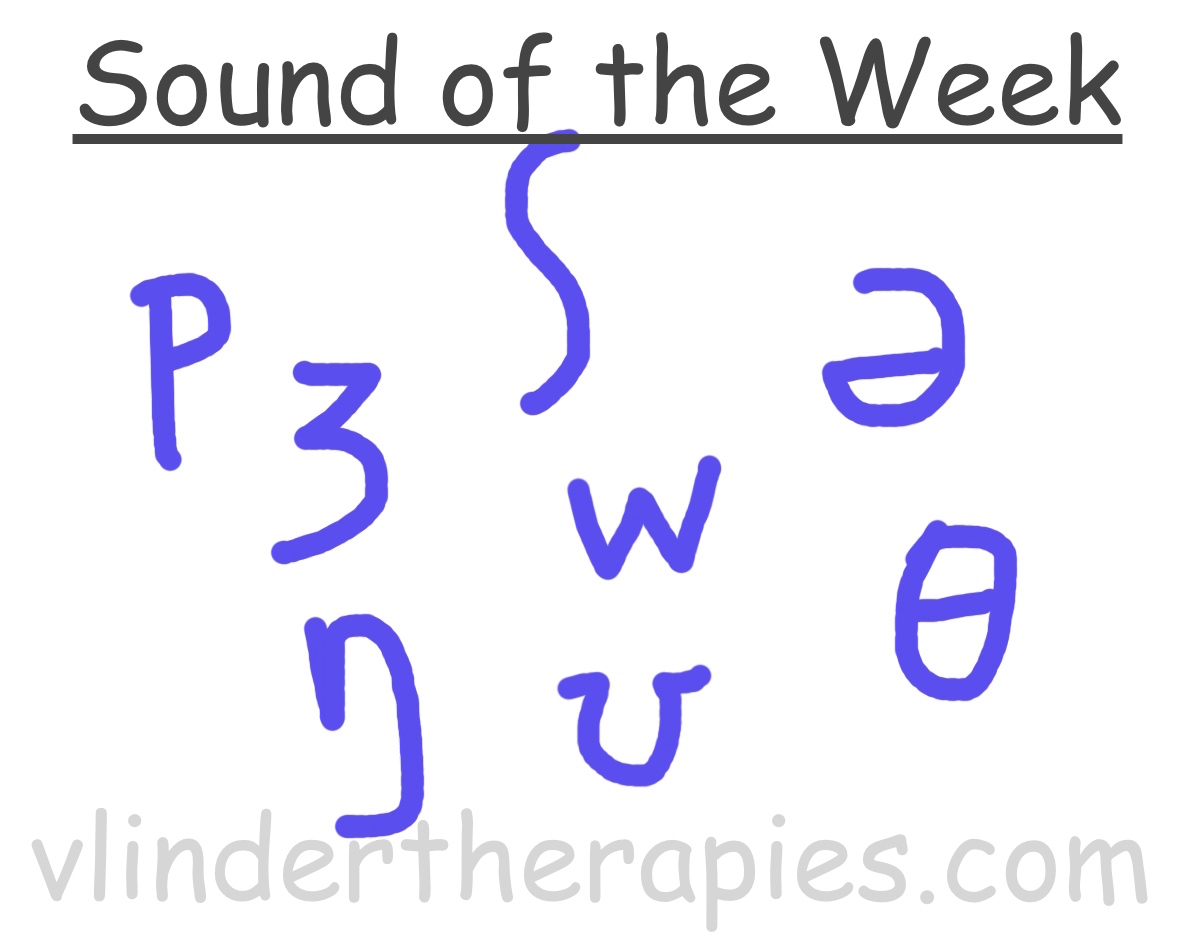A new "project": Sound of the Week
A while back I did a "letter of the week" project. At the time I was working with several young children with speech and language impairments who were also at risk for literacy difficulties. That project was actually the impetus for starting this blog! You can read more about the conception of the letter of the week project here. [And there is a blog post for every letter of the alphabet - feel free to check those out!]
My goal with that project was not that my clients would learn all of the letters of the alphabet. Beyond the goals in their treatment plans, my goal was simply to expose them to: the letter sounds and symbols, phonological and phonemic awareness, text, and the language/vocabulary themes that accompanied our target letter-sound. In order to get through every letter of the alphabet in a reasonable time frame, I chose to do a new letter-sound each week, with breaks for review and holidays. Since most kids come to therapy one time per week...well, it truly was all about exposure. But that is where the blog posts were supposed to come in and help. They were meant to give parents additional resources and ideas to carry the letter-sound/theme through the entire week outside of therapy. Those letter of the week blog posts continue to be my most popular.

Fast forward to last spring. Just as I was wrapping up the letter of the week project, I had a shift in focus for several of my clients. Apraxia and other motor speech disorders popped to the forefront. What evolved was essentially a "sound of the week" project. The title is a bit of a misnomer, as we are spending more than a week on each target sound and once the child is able to produce the speech sound in isolation (by itself) we quickly move to combining the sound with others to target sequencing/motor planning. Over the months, I have been slowly cobbling together several materials and programs to flesh out the content of this project. I am finally ready to start sharing our journey with the sound of the week. I have a back-log of posts to catch you up!
First, a note about representing sounds in written form. Because there is not a consistent one-to-one correspondence between the 26 letters in our alphabet and the 40+ sounds in Standard American English, we sometimes use IPA symbols (from the International Phonetic Alphabet) to represent speech sounds. And when referring to a specific speech sound we write it between slash marks. For example, /p/ for the "p" sound or /∫/ for the "sh" sound.
So, what programs have I incorporated? I am PROMPT trained (levels I and II), so the foundation for our speech production work is PROMPT. This incorporates the use of physical (tactile-kinesthetic) cues to the face to give additional information directly to the articulators (e.g. lips, tongue, jaw) regarding how to make different speech sounds. To provide structure to our endeavor, and to facilitate homework outside of therapy, the first activities I implemented were based on the Easy Does It for Apraxia Preschool program by Robin Strode Downing and Catherine Chamberlain. With the kids, I call this our "turtle work".
A few months into this project, I discovered this A-Z Alphabet Books for Me! product by Super Power Speech on TPT. These books for each letter of the alphabet have added a nice auditory bombardment, language, and literacy dimension to our sound of the week. Additionally, they give a nice opportunity for the kids to practice the target sound in a meaningful way.
In December I came across this Speech Room News blog post review of Teddy Talker by Creative Speech Products. As luck would have it, a friend/colleague had recently purchased a Teddy Talker kit and she has graciously loaned it to me! So this is a recent addition to our sessions.
And there is more! I am looking forward to sharing with you each "sound of the week". I hope you will follow along.
 Saturday, February 28, 2015 at 1:55PM
Saturday, February 28, 2015 at 1:55PM  Post a Comment →
Post a Comment →  apraxia,
apraxia,  speech | in
speech | in  Letter of the Week,
Letter of the Week,  Sound of the Week,
Sound of the Week,  Speech
Speech
Reader Comments